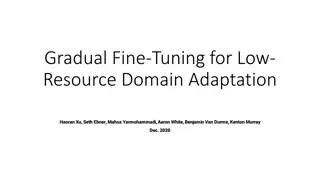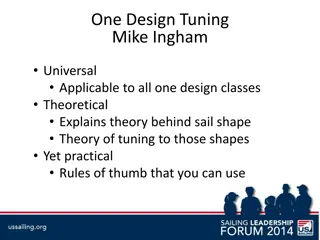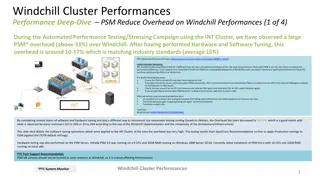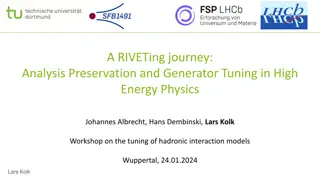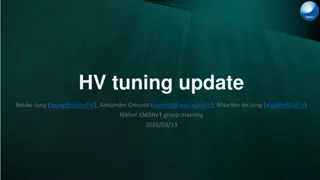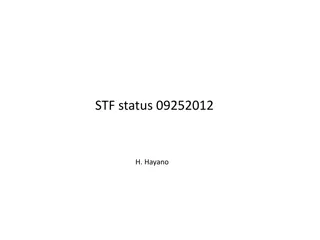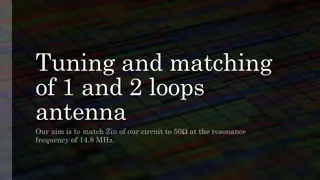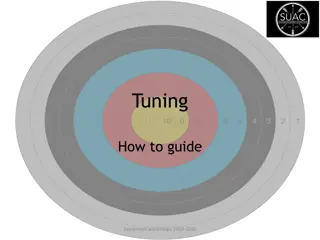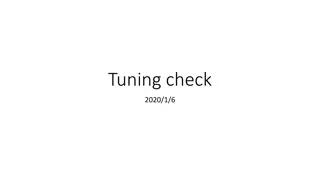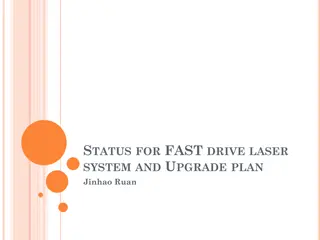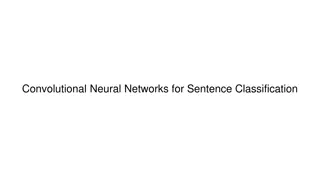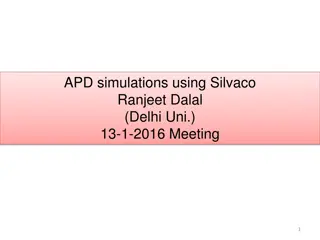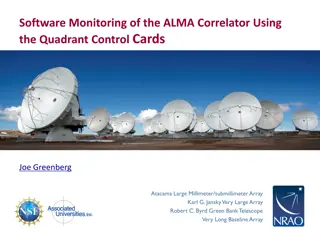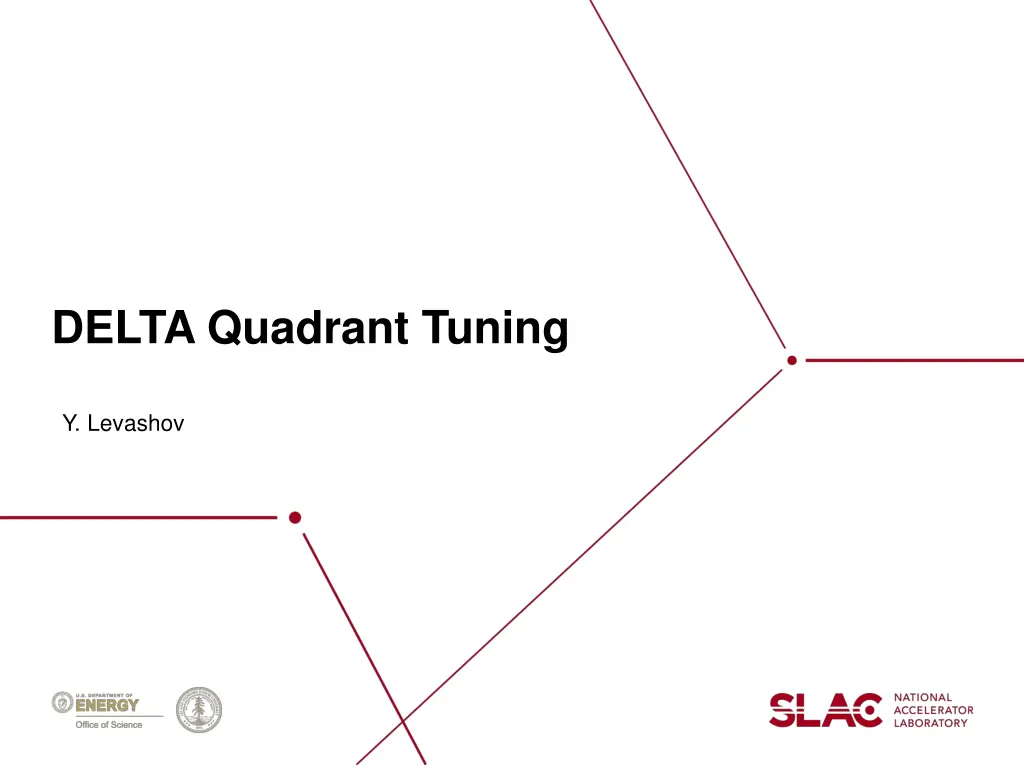
Tuning and Process for Magnetic Field Control
Discover how to tune and control magnetic fields using quadrant tuning, field change from magnet motion, and alignment processes. Learn about the Delta PPM device, field calculations, and magnet positioning for optimal results.
Download Presentation

Please find below an Image/Link to download the presentation.
The content on the website is provided AS IS for your information and personal use only. It may not be sold, licensed, or shared on other websites without obtaining consent from the author. If you encounter any issues during the download, it is possible that the publisher has removed the file from their server.
You are allowed to download the files provided on this website for personal or commercial use, subject to the condition that they are used lawfully. All files are the property of their respective owners.
The content on the website is provided AS IS for your information and personal use only. It may not be sold, licensed, or shared on other websites without obtaining consent from the author.
E N D
Presentation Transcript
DELTA Quadrant Tuning Y. Levashov
What to tune? Beam axis: ?? ? = ?0cos ??? ;??= 0; ??= 2?/?? Y X ? ?? 2?21 + 1 Z ? = ?????0 ??= 2?2; ? ?(?) =1 1 ?2+ ? 2+ ? 2??1 2 0 ?????=2? ????? ?(?) =2? ?(?) ?? ?? ?? ?? X ? ?????= ????? ? ????? ? Z Y ? ? ? ? = ? ? = ???1??1 ???? ?0 ? ? ? = ? ???1??1 ?0 2
Fields from a single magnet array No access to the magnets when assembled. DELTA is PPM device: Pros. superposition works, field at each point is a sum of fields from all magnets. Quadrants could be tuned separately. Cons. no iron shims could be used for tuning, virtual shimming. ? = ?0cos(???)? ???cos(???) ??= ?? ??,??= ?? ?? Y ??= ?0??sin(???)? ???cos(???) X ??= ?0??cos(???)? ???cos(???) ?? ? = 0,? = ?????; ??= 0, ??= ?0cos ??? - a single array could be treated as an undulator. Challenge for tuning probe positioning (setting K). ? ?= ?? ?; ??? ? ?= 10 4 and?? 200, ? < 0.5 m 3
Field change from magnet motion How to tune: - Move Y-magnets at X-trajectory kicks locations up/down to correct X-trajectory. - Move Y-magnets at Y-trajectory kicks locations left/right to correct Y-trajectory. - Move Y-magnets in pairs or Z-magnets up/down to correct phase errors and K. By field change from single block motion in Y Bx field change from single block motion in X Shim 0.025mm Y block 12 Tm 0.025mm Y block shift in x 4 Tm 0.125mm shift of a pair of Y blocks in y 13 degrees of phase change 0.125mm shift of Z block in y 4 degrees of phase change 4
Quadrant tuning process Find magnetic axis location, place probe on the axis. Move probe along the axis. Trigger DMMs at z interval. Apply zero drift and offset corrections to the voltages. Apply calibrations. Calculate fields. Iterate Calculate trajectories, phase errors and K value Tune trajectories Tune phase errors and K; make K the same for all four quadrants Check magnet mechanical positions on CMM 5
Senis 2-D probe Ceramic pad Plastic cover 6
Alignment to the bench (X & yaw) By vs probe X position 0.5 0.4 B (T) 0.3 0.2 0.1 0 0.012 0.017 0.022 0.027 X (m) 1. 2. 3. 4. Do Hall probe scan in X at each pole location Truncate data 3mm from center Fit parabola, find center Fit a straight line through all pole centers, find x and yaw, correct yaw if necessary. 7
Alignment to the bench (Y) Find center of fiducialization magnet with the Hall probe Measure difference in height between the magnet and the reference block by optical tools. Measure difference in height between the reference block and the quadrant by Keyence. Set quadrant by using cam movers. Y = 30 m B/B 0.5%, relative error quadrant-to-quadrant 0.1% 8
Check for assembly errors Correct X-blocks flipped 180 degrees
X-trajectory tuning Before After
Y-trajectory tuning Before After
Phase tuning Move block up Move block down
3.2m DELTA tuning summary 1. Quadrants were not straight enough during the tuning, which resulted in big phase errors. Max bow of 18 m and max pitch of 8 m allowed to keep phase errors below 5 degrees. Straightening the quadrant strongback on the tuning bench is required. Since two of the quadrants flipped during assembly, more attention to be paid to first integral tuning to be set to zero as close as possible. Otherwise the first integral will result in big second integral for flipped quadrants. Three iterations per quadrant required to complete the tuning. One iteration = 1 day, which adds to 3 weeks needed for tuning all the quadrants. Number of field scans/iteration average: Q1 11 (initial tuning, learning curve) Q2 15 (more time spent to tune phase errors) Q3 - 9 Q4 8 Wire measurements desirable to apply corrections for planar Hall effect. 2. 3. 4. 5. 13

